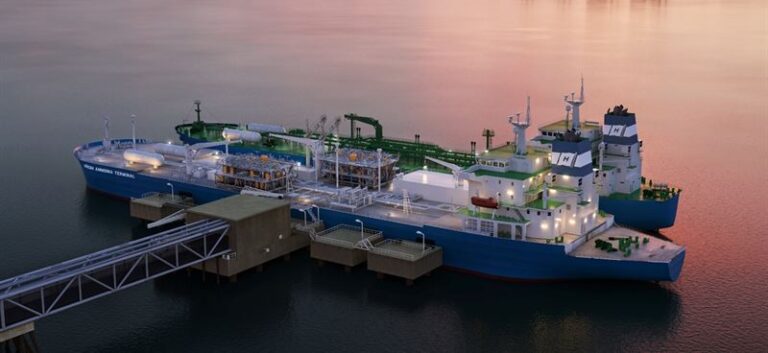A technology group consisting of Wärtsilä, Höegh LNG and partners the Institute for Energy Technology (IFE), University of South-East Norway, Sustainable Energy and BASF SE, have been awarded approximately €5.9m (U$6.5m) from the Norwegian government for the development of ammonia as a hydrogen carrier for the energy market.
The project, which forms part of Norway’s Green Platform program, has been designed to improve the availability of large-scale storage and the transportation capabilities of clean energy. While hydrogen is emerging as an alternative to fossil fuels, the gas has some drawbacks, such as being difficult to store. It is also difficult to transport because of its low volumetric energy density and the potential for large vaporization losses. As a result, ammonia is viewed as a potential solution to hydrogen’s drawbacks because it can be stored in liquid form at moderate pressures and temperatures. The project’s objective is to enable ammonia to be converted back to hydrogen at its final destination.
Green ammonia is produced from hydrogen via the electrolysis of water and nitrogen from the air. Green ammonia acts as a liquid battery and has a high energy density in comparison to alternative solutions for the storage and transportation of renewable power. Furthermore, the infrastructure for the large-scale transportation of ammonia is already available via a fleet of gas tankers that have ammonia on the cargo list.
“This important project is a natural extension of the investments and efforts made by Wärtsilä to accelerate the use of decarbonized energy,” said Walter Reggente, vice president of Wärtsilä Gas Solutions. “Hydrogen will play a considerable role in future renewable fuel consumption, and there is a clear need for the development of ammonia as a storage and transportation carrier for hydrogen. We are grateful to the Norwegian government for its support and funding, and we appreciate also the cooperation of Höegh LNG and our other partners in making this project possible.”
“As a world-leading provider of fast-track floating LNG terminals, we are well-positioned to support the transition to clean, carbon-free energy,” said Erik Nyheim, CEO and president of Höegh LNG. “New and innovative solutions will need to be developed and we look forward to working together to ensure we remain at the forefront of the energy transition.”
The system which the group plans to develop to convert ammonia back to hydrogen will be installed onboard a Höegh LNG vessel. The vessel will act as a floating receiving terminal capable of being relocated if required. The solution will use less coastal space, resulting in a lower overall cost, improved safety and more competitive hydrogen prices.



